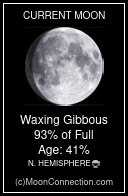What Defines a Dragon?
A Critical Question
-
Before one begins to work with dragons, often it is important to understand what a dragon is in the first place, and even more important to understand that we also aren't very sure. Due to the secretive and heavily diverse nature of dragons, amongst the draconic community it has proven near impossible to actually pinpoint what makes a dragon, a dragon.
There are many different factors one could look at. We could examine the patterns in their appearances within mythology over the course of history, but dragons are shapeshifters and have proven to take on the likeness of so many different creatures that we cannot say for certain that one trait of appearance certainly makes something a dragon. We could pay attention to their abilities and what historically they've been consistently capable of, but there tends to be a type of dragon to hold domain over basically every little thing in existence, with powers so diverse that simply identifying one factor as an indicator is near impossible. All of these beg further questions too, such as does a dragon have to be magickal to be a dragon? Must a dragon look anything like our traditional stereotypes of one to be a dragon? Dragons are simply so impossibly diverse that realistically, we will never get a clear answer. However, we do have some common traits to help possibly recognize one.
The most consistent patterns we've seen in dragon nature are that often they are highly intelligent great spirits who happen to be shapeshifters, can be tricksters with secrets or riddles, and tend to be very protective over the things they care for. Often these factors are used to help determine whether a being might qualify as a dragon if it is otherwise unclear. If one is met with a spirit and are unsure, you are always welcome to ask them, but be mindful of the answer as there is always a possibility of dishonesty whether they say they are one, or they say they are not.
We don't have any real answers to perhaps the most crucial question when it comes to working with dragons. But the lack of an answer simply goes to show how brilliantly diverse dragon spirits are, and that there are many to find and even more to learn from! It makes the adventure all the more exciting really, and let this act as encouragement to keep an open mind when faced with any dragon. No dragon has to be a four legged reptile with great leathery wings - no dragon has to be a serpent at all in the first place if we're being honest - be open to the possibilities, and do not shut down the possible existence of a dragon around you if you do not believe they fit your notion of what a dragon should or shouldn't be like. It will not do you any good, and also is just plain rude!

